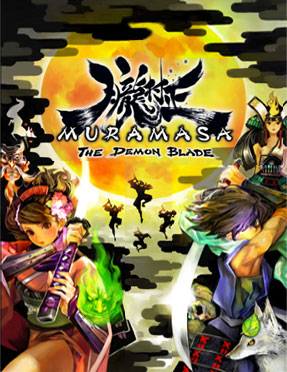A fast-paced, beautiful and stylish side-scrolling adventure
The name “Muramasa” is -- to me at least -- immediately evocative of that distinctly western flavor found almost exclusively in games released from our friends over in Japan. It would seem difficult to not immediately envision the blades of hardened samurai locked against one another, their eyes fastened with the knowledge that each passing second could indeed be their last in existence at the mere mention of the word. Perhaps that’s just a little too in-depth with my personal fascination with the word, so I’ll leave it at that and get down to business.
The first thing any up-to-date gamer is going to notice about Muramasa is that while it’s not at all up to today’s technical standards from a visual perspective, it still manages to come off as unique and absolutely gorgeous. I’m not kidding here. This game is very pretty despite its rather limiting two-dimensions. The many characters look as if they’ve been ripped straight from something crossed between a very serious anime and an early Disney cartoon. The artistic backdrops to each flat locale are generally equipped with no fewer than six or seven completely separate layers at any one time, not only inducing a real sense of progress as you traverse the world, but also forcing in the idea that games lacking the all-too-common high-definition, sweat-glistening space soldier don’t necessarily need to be written off quite as often as they are.
A large portion of the game’s visual style is also displayed in full during combat. Being primarily a 2D side-scrolling beat ‘em up, finding yourself surrounded by an excessive amount of ninjas or strange frolicking devil creatures during Muramasa isn’t exactly what I’d call an uncommon occurrence. Said enemies come in only two different flavors throughout the the easiest of the game’s two difficulty tracks: easy and annoying. The entire combat system focuses almost entirely on mashing the Wiimote’s “A” button while tilting the thumbstick in various directions. Occasionally you’ll want to switch weapons or drop a special move, but neither is involved to the point where I’d actually call it any sort of a task. None of these things are at all bad, though they might sound so. The relative simplicity of Muramasa’s basic gameplay is actually a sort of blessing. Hacking through enemies at such a furtive pace feels extremely rewarding and most certainly fulfills its job in getting your blood pumping. Really, the only time you’ll ever find yourself challenged is during the occasional boss encounter, and even those aren’t particularly difficult in their execution. The art style most definitely assists here with the combat, highly stylizing every last one of your character’s individual movements, making their mastery of the sword obvious and ever-present. Chances are that unless you absolutely must be challenged by every last obstacle found in every game you play, you’re going to enjoy the combat in this particular title.
The plot in Muramasa is oddly contrived and intriguing, though much of the time incomprehensible, which is honestly a shame. Much of what I could actually understand was genuinely compelling, quite honestly reminding me of a certain anime series that happens to be one of my own personal favorites. The basics are that you control either Momohime, a young maiden possessed by the spirit of a malevolent swordsman, or Kisuke, an amnesiac with an apparently bad standing with worldwide law enforcement.
Each scenario intersects with the other at certain moments, but the biggest impact that having two separate characters to follow has on the overall gameplay is the Forge tree. Within the Forge tree you can create new weapons for each character. Most swords require to to have either obtained or otherwise previously created weapon in order to make them, and in quite a number of cases they’ll require you to have acquired more than one as a prerequisite for another. In the case of these two characters, their respective trees do intersect in the middle, requiring you to have forged a specific sword from both Momohime and Kisuke’s arsenals to proceed to the more powerful weapons in the game.
Following the main story for each character will take you a total of about ten hours, but there’s still plenty of exploring to do afterward or, if you prefer, during the course of your adventure. Swords acquired at different stages of progression throughout the game will grant you access to Lairs, which are essentially mini-challenges with which to test your skill. The game is generally good about telling you when there’s nearby treasure to hunt, so doing that is both addictive and rewarding.
Along with so much treasure and exploration, there’s enough reason to spend some extra time playing within the aforementioned weapon creation system. It’ll be almost impossible to gather all available swords in one play through of each character’s scenario, so if that’s your goal, you’ve really got to be prepared to sink some time into this game.
It seems like there are a lot of two-dimensional, side-scrolling games coming out lately. Castle Crashers was pretty huge when it was released, ‘Splosion Man was a blast, and Shadow Complex hasn’t exactly faded into the background. Having played all three of those titles, I’d have to say that I’d be willing to forsake them in effort to give Muramasa the love that it deserves. It’s been quite a while since I’ve sat down at put a lot of time into a game lot this, and considering my personal indifference toward the genre to which it belongs, I guess that’s saying a little something.
